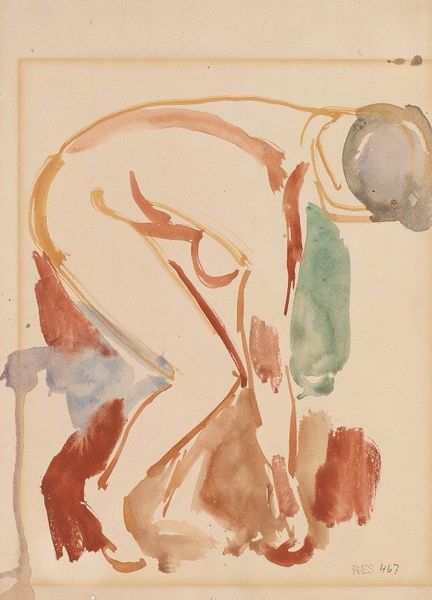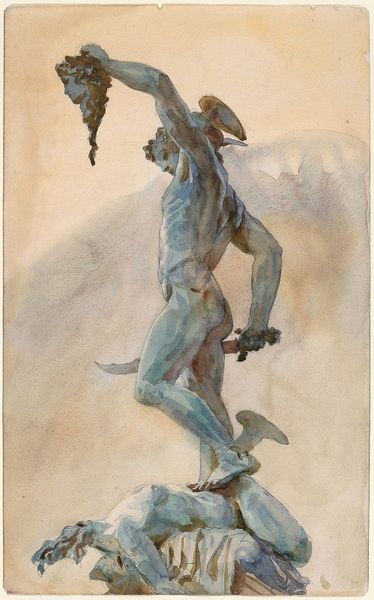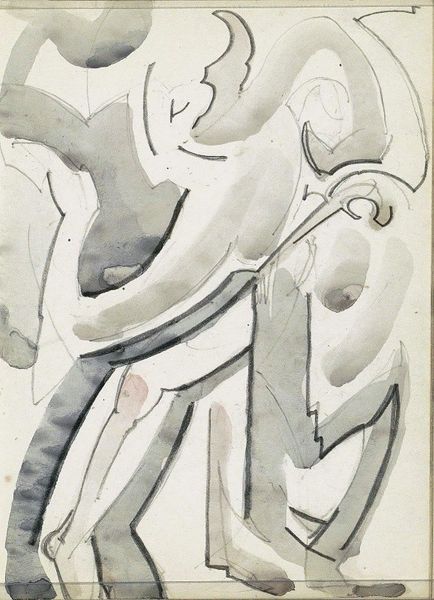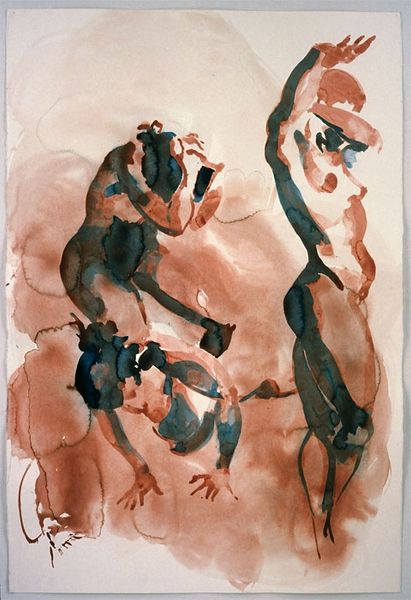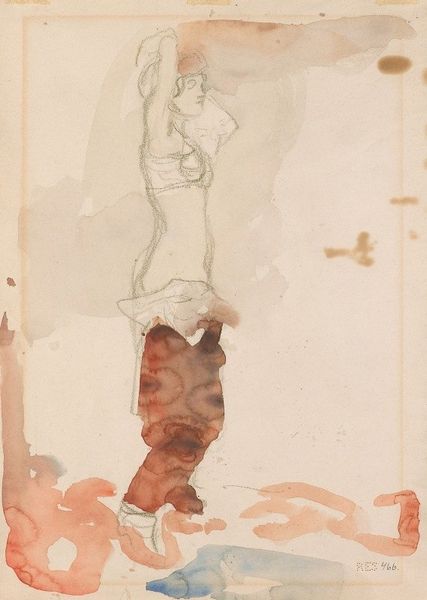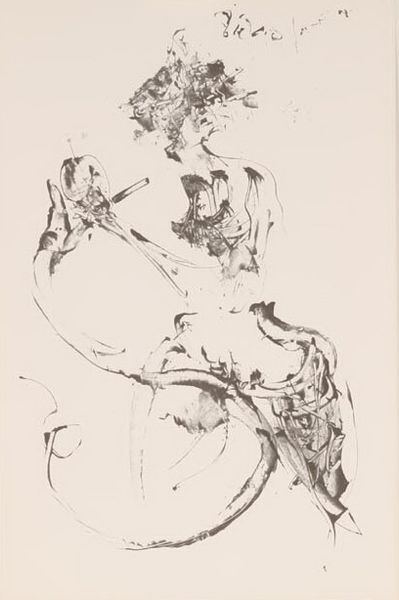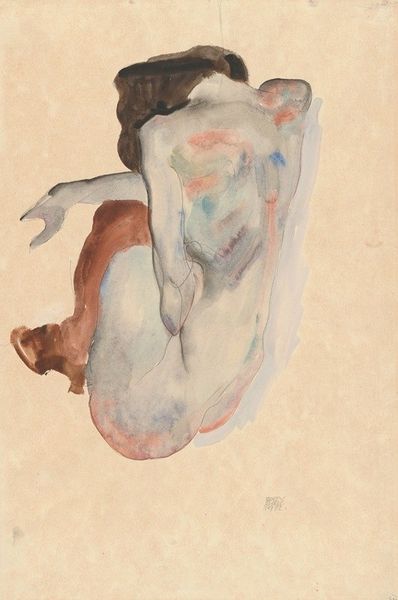
watercolor, sculpture
#
portrait
#
landscape
#
oil painting
#
watercolor
#
classicism
#
sculpture
#
watercolour illustration
#
watercolor
Copyright: Public Domain: Artvee
Editor: So this watercolor by John Singer Sargent, "A Statue in Rome," likely painted around 1906 or 1907, it really captures a classical sculpture, but there's something about the watery medium that softens it, gives it this ethereal feeling. What do you see in this piece beyond just a rendering of a sculpture? Curator: The choice of watercolor is indeed evocative. The fluidity, the way the pigment pools and flows, almost mimics the weathering effects of time on stone, doesn't it? Look closely, and you’ll notice how the artist has captured a dance of classical form but has softened its contours. In effect, he is looking beyond an illustration to explore the symbolic associations this work has of beauty, time, memory. Editor: Memory, that's interesting. How so? Curator: Classical sculptures are more than just figures; they are repositories of cultural memory. Each one embodies stories, myths, and values of past civilizations. Sargent is, in a way, painting our collective memory of Rome. What kind of emotional weight does it hold, do you think? Editor: I suppose there's a sense of longing. We're seeing this faded, romanticized version of the past. It's not a perfect representation, but a memory filtered through time. Curator: Exactly. The incompleteness, the lack of sharp detail, all contribute to this feeling. The artist prompts the viewer to reflect upon not just the glory of antiquity but also the act of remembering itself, and its imperfections, right? How does our view shift depending on our understanding of the past? Editor: Wow, I hadn't considered that it prompts questioning, but it really does make you wonder what’s changed between then and now, and whether the way we view things even matters. Curator: The layers of meaning embedded within what might appear as simply a painterly sketch offer a lens through which we examine how civilizations are both preserved and reshaped by time. It’s as if Sargent is urging us to confront our relationship to our history.
Comments
No comments
Be the first to comment and join the conversation on the ultimate creative platform.
